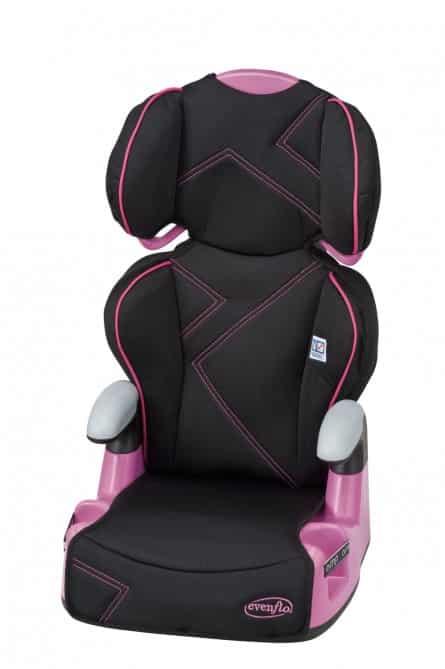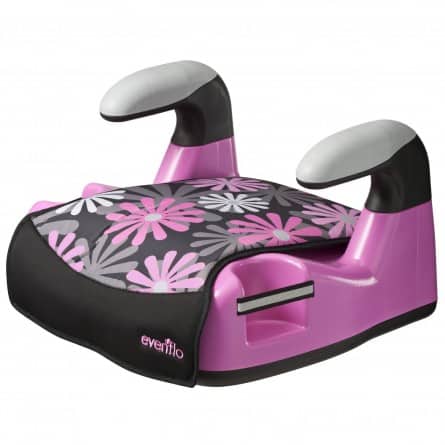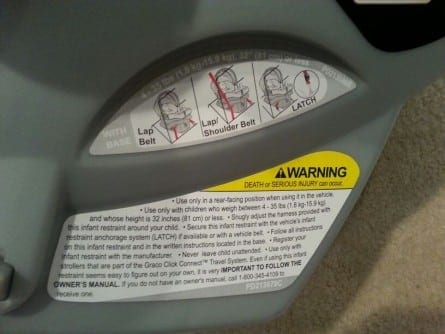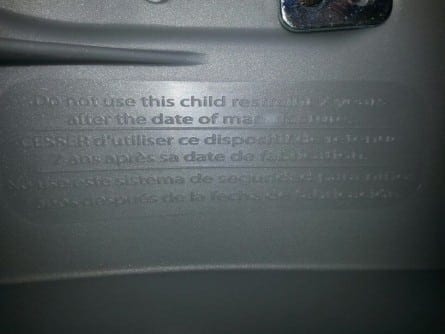Car Seat Selection and Direction
Car seat selection is important, but did you know that 9 out of 10 car seats are not properly installed? It’s no wonder car accidents are the leading cause of preventable deaths for children (ages 1-13).
Educating caregivers on proper car seat selection and use is part of my job as a certified Child Passenger Safety Technician (CPST). It’s not my job to just install a seat for a parent, but to teach a parent how to make the right car seat selection, and how to properly and confidently install a seat on their own. Over the next few articles we will go through the steps to ensure that your children are the safest they can be in the car.
To find a certified CPST in your area, visit Safe Kids or find your local Safe Kids coalition to find a seat check event near you.

Car seat selection depends in part on understanding the 4 stages of restraint usage: rear-facing seats, forward-facing seats, belt positioning boosters, and seat belts. The type of car seat restraint you need will depend on your child’s age and size.
The five different types of seats to accommodate these stages are:

Infant-Only Seat (Rear-Facing only): Designed for newborns and small babies, the Infant-Only seat is a small, portable seat with a carry handle that can only be used in a rear-facing position.

Convertible Seat: As a child grows, this seat can change from a rear-facing to a forward-facing seat with a harness. Because it can be used with children of various sizes, it allows for children to stay in a rear-facing position longer. Some convertible seats on the market today can even fit a newborn.


Car seat selection is in part based on proper back support. A Booster seat positions the seat belt so that it fits properly over the strongest parts of a child’s body. This can help reduce injury during a crash. Boosters can be a “high back booster” which looks like a car seat without a harness, or a “no back booster” which does not go behind the child’s back.
Seats with more than 2 functions:

Combination Seat: Only works as a forward facing harnessed seat and then as a booster seat when the child reaches the maximum limits of the harness.

All-in-One Seat: This seat can typically change from a rear-facing seat to a forward-facing seat to a booster seat as a child grows. Car seats of this type are also known by other names, including 3-in-1, so you should carefully read the manufacturer’s description of which phases of a child’s growth that the seat will fit. Sometimes a seat called “3-in-1” is only for forward facing and then the 2 different types of boosters, so make sure to read the labeling during car seat selection.
What To Look For When Buying a Car Seat
All car seats and boosters have height and weight ranges (minimum weight, and maximum weight/height) that vary by seat. These limits are printed on stickers on the side of the seat, as well as listed in the car seat’s manual.

Always make sure to check these limits and be aware of your child’s height and weight to make sure s/he is within those limits.
If a child exceeds one of the limits before the other, the seat has been outgrown. A seat with more than one function (convertible and combination seats) will have separate limits for each mode.

Not all car seats will fit well in every vehicle. Retailers should allow you to test out floor models of various car seats in your car, with an employee present.
With all of the different brands and seats available, you probably want to know which one is the safest. The safest car seat for your child is one that is properly fitted to your child and vehicle, and that you will be able to install and use correctly every single time.
You also want to make sure that the car seat you are using is not expired, recalled, or has an otherwise unknown history (for example, a seat purchased used at a garage sale or consignment shop.)
Car seats are made mostly of plastic, which degrades and becomes brittle over time. Because of this, along with ongoing advances in safety research and technology, car seats have an expiration date. Most brands have a 6-7 year lifespan from the time of manufacture. The labels on the seat will contain a date of manufacture, and many seats will have a date of expiration stamped into the bottom of the plastic shell or a message similar to “do not use this child restraint 7 years after the date of manufacture.” If no expiration dates are found on the seat, check your car seat’s manual for this information.


Car seats are “one time use” items. Most car seat manufacturers say to replace the seat after ANY crash, even if you cannot see any visible damage. Check your seat’s manual to see what the manufacturer’s policy is, or give them a call.
Recalled seats can be found on NHTSA’s recall list.
Buying a used seat from a stranger or a consignment shop, or renting a seat can put your child at risk because you don’t know if the seat has been maintained according to the manufacturer’s instruction, if it has ever been in a crash, checked on an airplane, recalled, etc. Don’t put your child in a used car seat unless you know the seat’s full history and trust the previous user’s answers with your child’s life.
Selection and Direction

Stage 1: Rear Facing Car Seat
Birth-4 years (or until max limits of seat):
Types of seats to use: Infant seat, convertible seat in rear-facing position, or all-in-one seat in rear-facing position
“All infants and toddlers should ride in a rear-facing car safety seat (CSS) until they are 2 years of age or until they reach the highest weight or height allowed by the manufacturer of their CSS.”
–The American Academy of Pediatrics
Ideally, a child should remain rear facing until 4 years old.
Why? A toddler’s body is still forming as he grows. The bones have not fully ossified, and cartilage is connecting a toddler’s vertebrae rather than ossified bone. To get technical, those cartilage connections are called synchondroses, which slowly close over time. There are three major points of ossification, each with two synchondroses.
According to a study published in the Association for the Advancement of Automotive Medicine, the first station to close is the C3, second is the axis, and third is the atlas. Even by the time a child turns 3, there’s only a 50% chance that his C3 vertebra have fully ossified. The longer you can keep your child rear facing, the better the chance that his spinal column will have strengthened over time.

The above image shows the cervical (top), thoracic (middle), and lumbar (bottom) vertebrae of a one year old (left, each photo) and six year old (right, each photo). Note the easily visible synchondroses in each.
Another item to consider is how much weight a toddler’s spine is supporting. An average nine month old child’s head makes up 25% of his body weight; while an adult’s head only makes up 6% of its body weight. This difference in proportion only adds to the need to protect the spinal column.
During a crash, occupants travel towards the point of impact, putting all the stress on the neck and spine. At that moment there are actually three impacts: the vehicle striking whatever it strikes, the body of the occupant being retained by the seat belt or harness, and then the internal organs striking the front of the inside of the body. In a crash, a rear-facing car seat cradles and moves with your child, combining impacts number 2 and 3. This helps reduce stress to his fragile neck and spinal cord.
Rear facing is not a matter of parenting style or opinion, it a choice based on scientific fact. The more we know about crashes, the better we can protect our kids from injury in a crash. Many of the convertible car seats on the market today have higherweight and height limits, allowing them to be used in a rear facing position until age 3 or 4.

Stage 2: Forward-Facing Car Seat
Approximately 4-7 years old
Types of seats to use: Convertible seat in forward-facing position, combination seat with harness, or all-in-one seat in forward-facing position.
During a crash, the harness makes contact with the strongest parts of the child’s body to distribute the crash forces and to keep the child in the seat. The top tether limits the child’s forward head movement (excursion). Once your child reaches the limit of the forward facing seat (or the harness on a combination seat) it is time to move to a booster seat.
- Does your child exceed the car seat’s height or weight limits?
- Are his shoulders above the car seat’s top harness slots?
- Are the tops of his ears above the top of the car seat?
If you answered yes to any of these questions, your child has probably outgrown his harnessed seat and it’s time for a booster.

Stage 3: Belt-positioning booster seat
Approximately Ages 6-12 years old
Types of seats to use: Combination seat in booster mode, all-in-one seat in booster mode, or booster.
A booster seat helps position an adult lap-and-shoulder belt properly on a child. For a seat belt to fit properly the lap belt must lie snugly across the upper thighs, not the stomach. The shoulder belt should lie snug across the shoulder and chest and not cross the neck or face.


Booster seats are not tightly installed in the vehicle the way car seats are. Booster seats are held in place by the child’s weight and vehicle’s lap-and-shoulder belts.These seats boost children up to ensure correct seat belt fit. Even if the child is not present, booster seats should be secured in the vehicle at all times. When not buckled, the booster seat can be tossed around the vehicle causing injury to vehicle occupants during a crash or sudden stop.

Stage 4: Seat belt
Approximately 13+ years old
There is a five step test to check if your child is ready to graduate from a booster seat to an adult seat belt. If any one of these conditions is not met, he needs to continue using a booster:
- He is tall enough to sit in the seat without slouching
- He can keep his back against the vehicle seat
- He can keep his knees naturally bent over the edge of the vehicle seat
- He can keep his feet flat on the vehicle floor.
- The lap belt must lie snugly across his upper thighs, not the stomach. The shoulder belt should lie snugly across his shoulder and chest, not across his neck or face, and should never be pulled behind him.
Every vehicle is different, and a child might pass these 5 steps in one car, but not another. Make sure to do the 5 step test in every car your child will be riding in. Children under 13 should always be in the back seat.
Never use a lap-only belt on any passenger in the car, they do not provide adequate protection in the event of a crash. A lap-only belt is great for installing a car seat, but not for restraining a person.
Common seat selection and use errors:
- The child is not within the height/weight limits of the seat selected, or is moved to the next stage before appropriate.
- Using a seat with an unknown history, seat that is expired, has been recalled or has been in a crash
- Improperly cleaning a car seat – always consult your manual. Most seats have removable covers that are hand or machine washable with gentle soap, but harness/LATCH/tether straps should NEVER be submerged in water (like a washing machine) or washed with harsh cleaners. This can stretch them or otherwise weaken the fibers. Your manual will have specific instructions on cleaning your seat’s straps. Replacement straps and covers are usually available from the manufacturer in the event that they are beyond cleaning. Make sure to follow the manual for instructions on reassembling the seat covers after washing.
- Using a car seat for a function it does not perform – make sure you follow the instructions for your seat. Infant seats should NEVER be installed forward facing, and convertible seats without a booster function not be used as a booster.
To find a Certified CPST in your area, visit Safe Kids or find your local Safe Kids coalition to find a seat check event near you.
Tomorrow, Part II of this series: The Comprehensive Guide to Car Seat Safety Part II (Installation).
